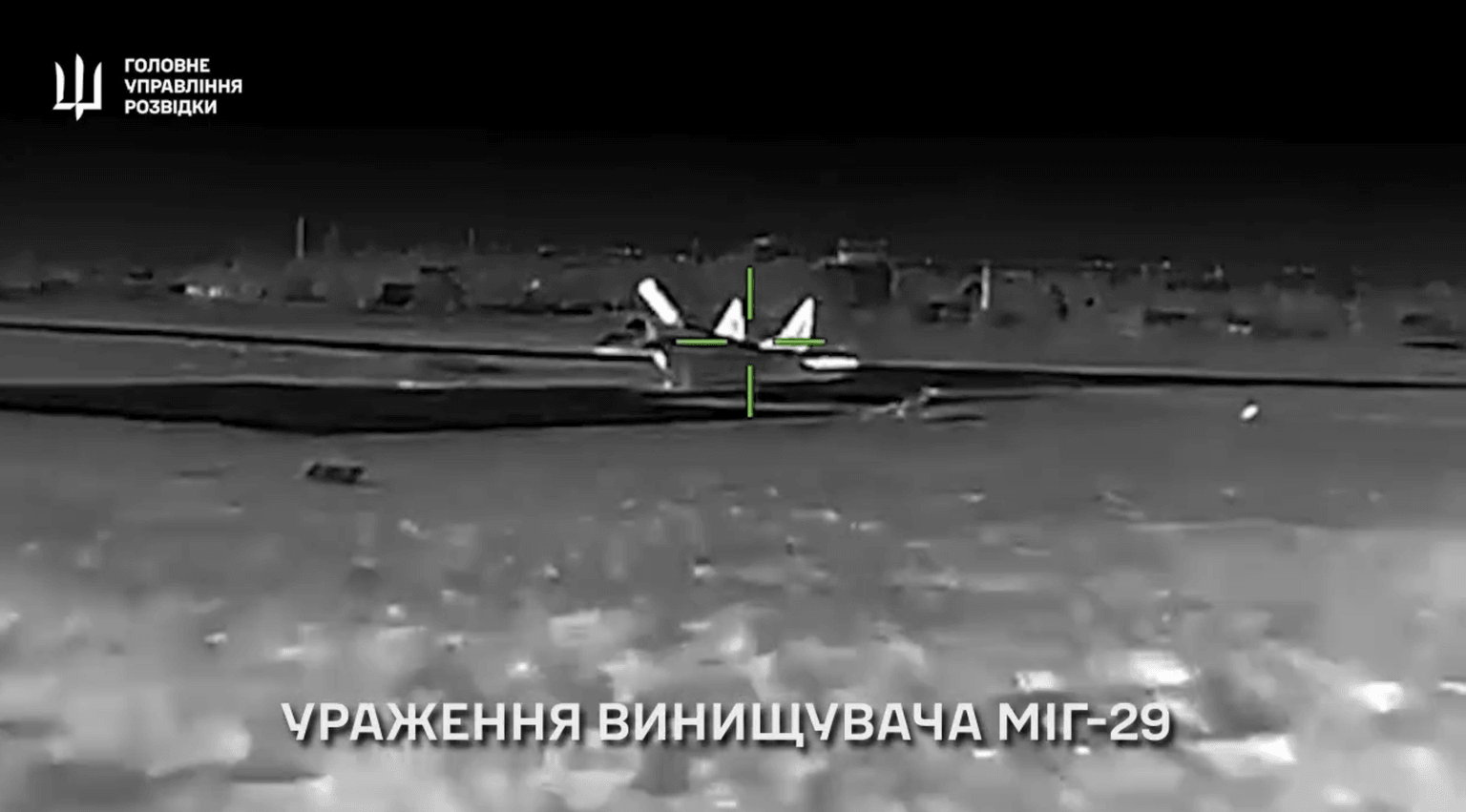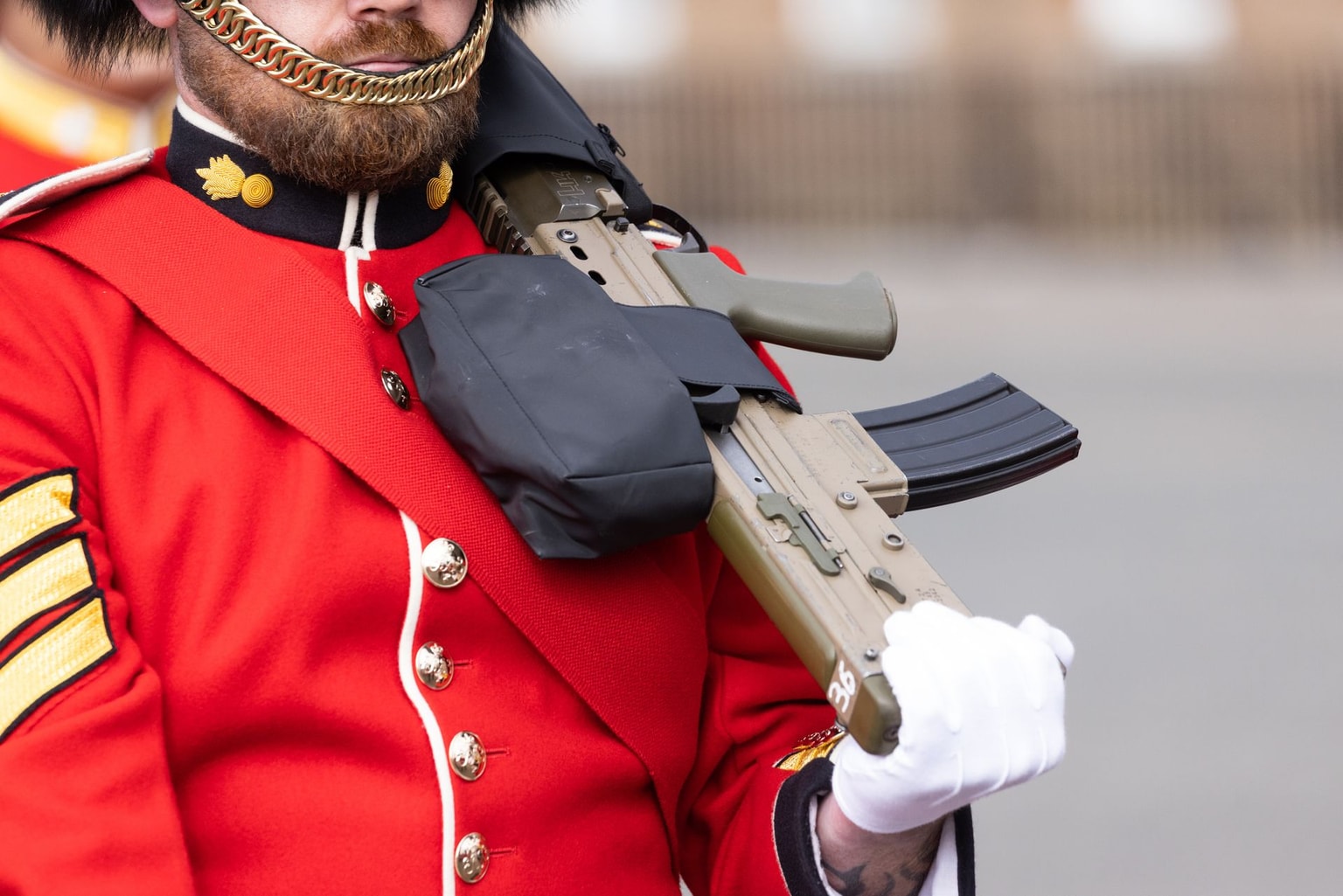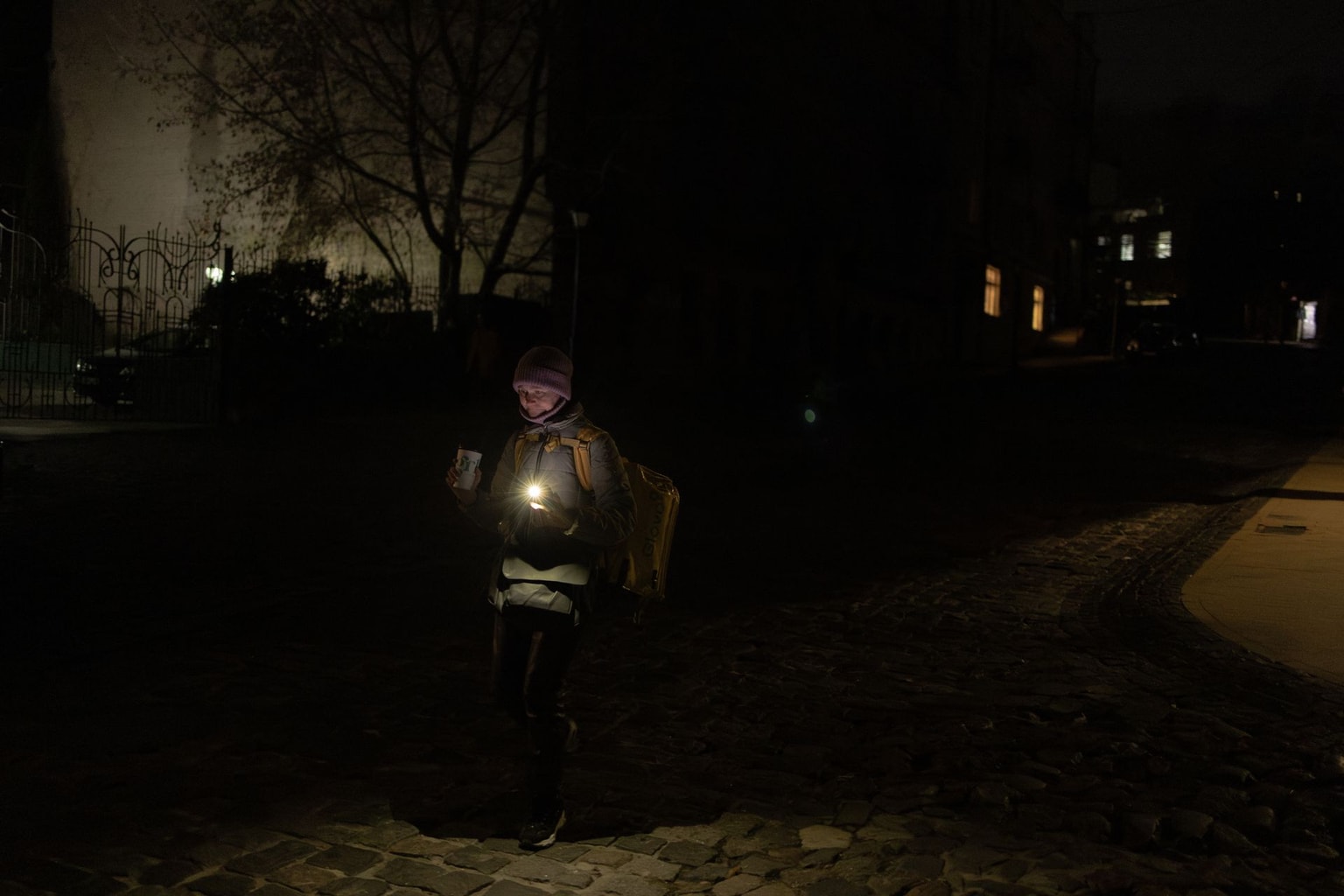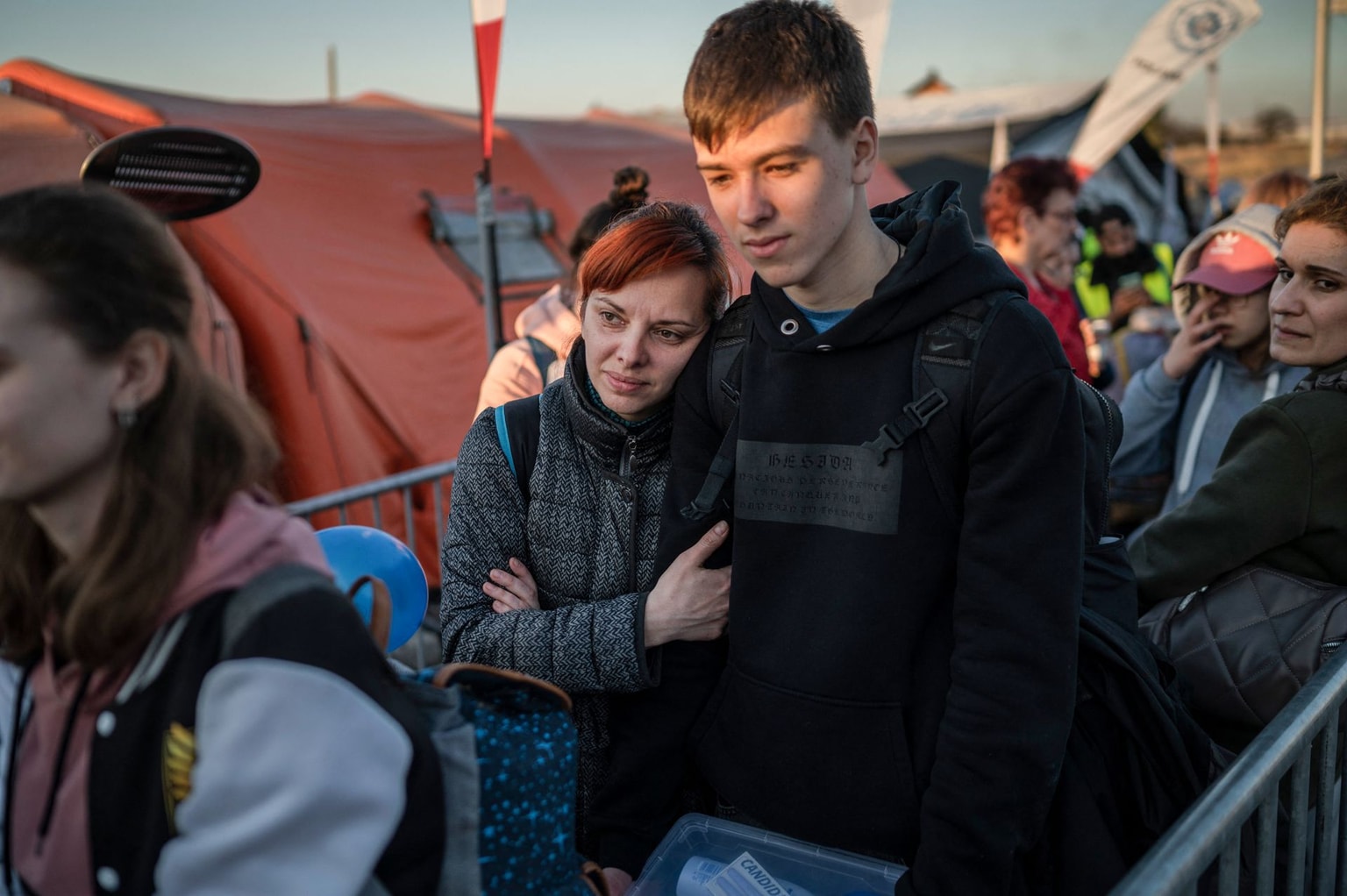From drone simulators to civics: Ukraine reforms school curriculum to protect next generation from Russian threat
With a new set of school reforms, Ukraine is looking to further distance itself from its Soviet educational heritage, while preparing its younger generations for the threat of continued war from an aggressive neighbor.
Schoolchildren practice shooting during a “Defense of Ukraine” lesson in Kyiv Oblast, on Oct. 1, 2024. (Lisa Bukreyeva / The Kyiv Independent)
In a small town in Kyiv Oblast, 10th grader Alina Marynenko just beat her entire class to be the most accurate shooter on an AK-47 simulator.
"Fourteen out of fifteen! I set a record! We beat the boys!" Marynenko yells out to her class.
Marynenko and her classmates fired the simulated weapon during a “Defense of Ukraine” lesson, an experimental course part of a wider educational reform passed after the start of Russia’s full-scale invasion.
The course has been part of the Ukrainian school curriculum since Soviet times, also known over the years as "Pre-Conscription Training" and "Defense of the Homeland." If before 2022, the subject was seen as obsolete, hardly taken seriously by students who at times saw it more as an opportunity to goof off, Russia’s all-out aggression has given it a new life.
The reform, launched in 2024, has outfitted nearly 600 classrooms at schools that have volunteered to participate in the trial phase with new equipment from first aid training kits, interactive whiteboards and computers, to drone simulators. The new program will be mandatory across all schools in 2027.
The authors of the reform and its proponents are quick to distinguish the “Defense of Ukraine” from its counterpart in Russia, where a similar mandatory school program returned basic military training to the curriculum after the start of the full-scale invasion.
To distance itself from what many consider to be Russia’s attempts at militarizing its youth, the new course in Ukraine includes topics such as civics, geopolitics, and history, in addition to weapons training on simulators.
"Every citizen has levers to influence certain processes in our society, the military, the state in general — everywhere. And the skills the children acquire (in these classes) can be used in civilian life as well," Volodymyr Komlyk, a reserve officer in the Ukrainian Armed Forces and teacher of the “Defense of Ukraine” course in Kyiv Oblast course.
"Ukraine needs to be defended not only in the trenches."
A relic of the past
In Soviet times up until the reform, the course was divided by gender. While boys trained for potential military service, girls learned first aid and the basics of medicine.
Before entering the classroom, boys would have to line up to greet the course teacher with a salute or listen to the national anthem.
In a different classroom, girls dealt with old rubber tourniquets and bandages. Impractical, and at times unscientific, the knowledge the girls learned would hardly save anyone on the front line today.
Textbooks were often full of outdated information. The classes were frequently taught by P.E., biology, or humanities teachers who at times had to rely on their own experience in teaching the subject.
"When I was at school, the teacher would come to class, open a page in a course book, and then his phone would ring. He worked as a taxi driver, and occasionally, he would get called in. We would sit alone and read from our textbook," Komlyk told the Kyiv Independent.
The overall attitude toward the class meant it was often skipped by students, lawmaker Inna Sovsun, one of the authors of the reform, told the Kyiv Independent. The issue was both a lack of trained teachers and the Soviet curriculum, she said.
Sovsun said the main goal of the change was to remove everything related to outdated Soviet army regulations from the course materials. It also did away with separating the students by gender. The move didn’t sit well with opponents who felt girls shouldn’t be learning military basics, Sovsun said.
"During work with focus groups, one of the teachers made the point that girls should not be taught to shoot because they do not have enough strength in their fingers to pull the trigger," Sovsun said.
Besides merging girls' and boys' classes, the program also added introductory sections on drones, as well as updated units on marksmanship training, terrain orienteering, crisis response, and the basics of national security and defense of Ukraine, among other topics.
The program’s backers maintain they are not aiming to train 16 and 17-year-olds to be soldiers, but preparing them for a reality where Russian aggression is ongoing, with no clear end in sight.
"Can you imagine how many weapons are now in the hands of the military who will be returning home, where children live?” Sovsun said, in reference to the importance of knowing how to properly handle weapons.
"I am also a mom. I don't want to prepare my children for military service, but it’s my goal as a mother to make sure they know how to protect themselves so that Russia can’t invade again in the future, and this knowledge isn’t even needed.”
From theory to practice
As the bell rings, the children head downstairs to a classroom that also serves as a shelter — instead of desks, chairs are strewn across the room, which has been divided up into different zones for group activities and drone and shooting simulators.
Komlyk works with 350 children from the 10th and 11th grades. Lessons are scheduled over 12 days a month, and children spend the entire school day at the location. Komlyk's school hosts its students and those from nearby smaller settlements. The name of the town where the school is located is not being disclosed for security reasons.
"We have merged some classes so that no more than 24 pupils are in each. Unfortunately, many children do not make it to class because of air raid alerts," Komlyk said.

On this particular day, there were no air raid alerts, so the class was full as the students played a game to learn about the principles of how economies and states develop while others trained on simulators.
"You need to be very careful when flying. The drone is very sensitive. I wouldn't say that it's much harder to operate this controller. I think it's more a matter of the drone itself. It's very fast," said student Oleksandr Miestiechkin, as he tried to keep the FPV (first-person-view) drone in the air.
The simulator is not like the one used in real military training. The only goal is to overcome neon-colored obstacles. The same goes for the shooting simulator: children use toy weapons without ammunition to shoot at moving or stationary targets, and a computer records the results.
"I asked the children why we needed this subject in the first lesson. Many of them answered, 'For going to the trench at 18,’" Komlyk said.
"I asked the children why we needed this subject in the first lesson. Many of them answered, 'For going to the trench at 18.’"
"I explained that Ukraine needs to be defended not only at the front line. It can be done in the public, political, media, or cultural sectors. The statements voiced by the children are a consequence of the old approach to teaching this subject," the teacher added.
Student Arianna Safronova said one of her favorite activities is the game "Two Countries," which aims to give children a basic understanding of what factors lead to the prosperity or collapse of a state.
"We are now learning what a community is, its value and importance, and who we are," Safronova said, but added that she considers first aid to be the most important block of the course as Russia’s war continues.
Militarizing Russia’s youth
Meanwhile, in 2024, the Russian state introduced a mandatory discipline for middle and high school called the "Fundamentals of Security and Defense of the Motherland.” The new course replaced the course "Fundamentals of Life Safety" (FLS), returning basic military training to the curriculum.
For about 60 years, Soviet schoolchildren assembled and disassembled assault rifles, learned how to put on gas masks, and provided first aid during the lessons of "Basic Military Training" (BMT). This subject was removed from the school curriculum in the late 1980s and replaced with FLS.
Discussions on its return were raised at the beginning of the full-scale invasion of Ukraine in 2022.
Sergei Mironov, leader of the Just Russia — For Truth party, said in 2022 that the resumption of BMT would help "systematically prepare citizens for a possible confrontation with the enemy." The course is also intended to teach high school students how to use weapons and help employ war veterans who fought in Ukraine, according to Mironov.
The topics for the revised course were developed in cooperation with the Russian Defense Ministry, with reserve lieutenant colonel Yuriy Kostikin from the Moscow Suvorov School leading the reform, according to the pro-Kremlin newspaper Lenta.
As early as the first lesson, children should be taught how the Russian army was formed and that "military service is the duty and obligation of every man,” Kostikin said. Teenagers will learn about the principle of unity of command in the military and must internalize that "the commander is always right," he said.
The children will also go on several-day camps to practice their newly acquired skills in a hands-on environment, learning how to dig trenches, navigate the terrain, and survive in adverse conditions.
The program in Russia requires children to memorize military regulations, as well as to obey the commands of "Attention" and "Stand at ease." The updated course is mandatory only for boys, while girls can opt to study medicine.
While Russia only made this subject compulsory in 2024, many Russian children have already been learning these skills in other forms, according to Jade McGlynn, a Leverhulme EC Researcher in the War Studies department at King's College London.
Military and patriotic clubs, as well as ideological movements for youth, are widespread in Russia. The most well-known is the Young Army Cadets National Movement ("Young Army"), which is subordinated to Russia's Defense Ministry. Established in 2016, the "Young Army " is now sanctioned by the European Union, the U.S., Canada, and Switzerland due to its militarization of children.
McGlynn noted that Russia is making significant efforts to militarize younger generation of Russians, as they are quite vulnerable and easily influenced by different views in their age.

Whether students are even interested in military training is no matter, McGlynn says, as the Russian state goes to length to ensure the interest emerges.
"The more you know about something, the more likely you'll become interested in it," she said.
Russia has aimed its efforts to militarize young people in Russian-occupied territories of Ukraine as well. Russia’s proxies there have launched cadet classes, held events such as "Vacations with the Russian Guard," and openly demonize Ukraine and the government in Kyiv.
"All (Ukrainian) children in occupation who've lived through the war are going to be effectively militarized anyway just by having to grow up in such a horror," McGlynn said.
"All (Ukrainian) children in occupation who've lived through the war are going to be effectively militarized anyway just by having to grow up in such a horror."
"This is not just about training children for war, in Russia's case. There is a deeply ideological, genocidal element of destroying their Ukrainian identity as well."
"It's very hard to destroy a person's identity. But the sort of pressure that Ukrainian children are placed under during the formative period of their self-realization means that, unfortunately, there is a strong possibility that Russia’s efforts could be effective."


According to the Ukrainian government's official database, over 20,000 Ukrainian children have been displaced to Russian-occupied territories or Russia since the full-scale invasion. Ukraine's Ombudsman Dmytro Lubinets has suggested that this number could be much bigger — nearly 150,000.
The Ukrainian government, which has recognized the deportation of children as genocide against the Ukrainian people, continues to work to bring them home. Yet, an equally great challenge is to protect Ukrainian youth on Ukraine-controlled territories from Russian influence, which could pose an even more significant threat in the future.
"We will never completely eradicate the Russian influence. It will always follow us somewhere on social media or while traveling worldwide," said Arianna Safronova, the Ukrainian 10th grader.
"Every citizen must realize that they are Ukrainians. Ukrainian culture exists, and our heritage is very powerful, just like our country."










